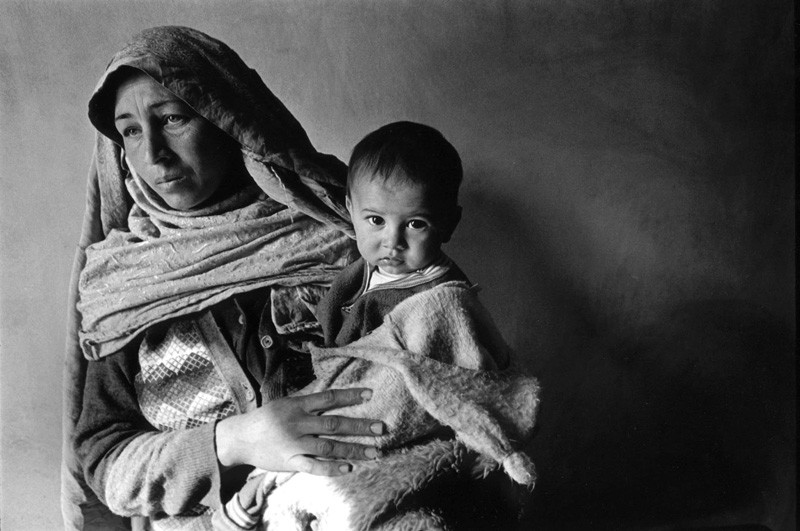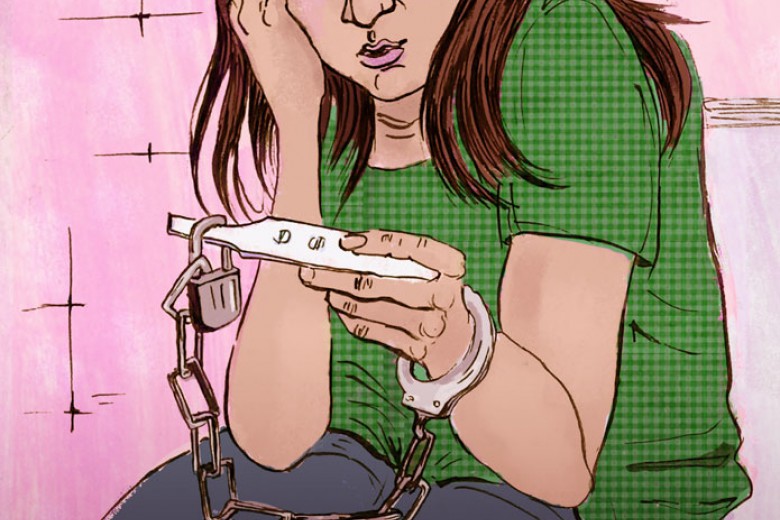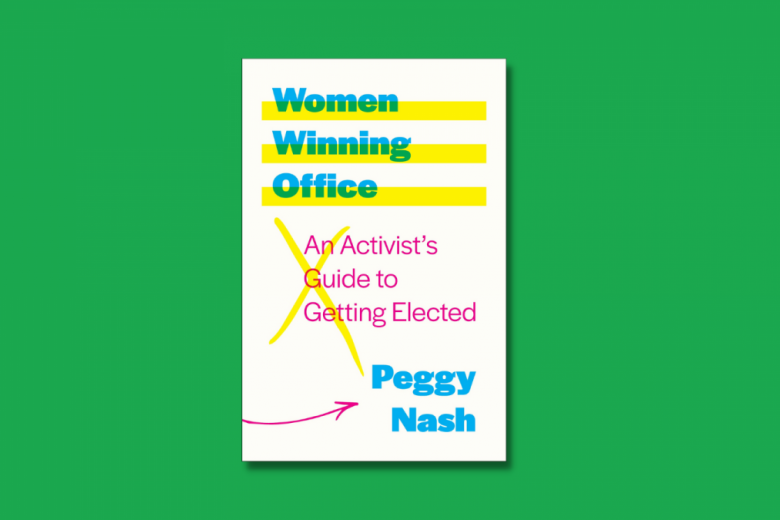
From the 1950s until the end of the 1970s, a visit to major urban centres in Afghanistan would show a growing number of Afghan girls and women were pursuing education and careers, as well as beginning to enjoy many of the freedoms associated with modern society. To be sure, the patriarchal, feudal social relations characteristic of much of rural Afghanistan ensured that progress for the majority of Afghan women might still be far off, but some hope was at least on the horizon. Today, however, Afghan women are ranked by Human Rights Watch as “among the world’s worst off” by most indicators of social, economic, and political status. What happened? And has the U.S. invasion and NATO occupation improved the situation, or made it worse?
The worst problems for Afghan women began not in 1996 when the Taliban seized power, but during the decades of prior conflict. The People’s Democratic Party of Afghanistan (PDPA) that governed the country after overthrowing the monarchy in 1973 was by no means a progressive democratic socialist government. The PDPA—best described as paranoid and brutal—nonetheless instituted some progressive socialist policies such as land redistribution, the banning of dowries for brides, and legislation protecting freedom of choice within marriages. In March 1979, legislation for the universal education of Afghan girls and boys sparked a violent revolt in Herat in which a number of visiting Soviet political advisers and their families were killed.
Shortly after, in July 1979, U.S. President Jimmy Carter signed secret orders to support the fundamentalist mujahedeen uprising by funnelling military aid into Afghanistan via the Pakistani military intelligence service. In response, the Soviets invaded on 25 December 1979, triggering a brutal war that did not end with the Soviet withdrawal in 1989. Throughout the 1980s and into the 1990s, the U.S. invested billions of dollars in arming and training the mujahedeen.
The mujahedeen—America’s “freedom fighters”—toppled the PDPA government and declared Afghanistan an Islamic Republic in 1992. War continued between competing mujahedeen factions from 1992 to 1996, reducing 80 per cent of Kabul to rubble. Human Rights Watch reports that from 1992 to 1994, “anyone in Kabul could be killed at any time, almost anywhere” as warring mujahedeen factions “intentionally targeted civilians and civilian areas.” The Taliban (a radical armed faction with backing from Pakistan) seized power in 1996; the factions opposed to the Taliban eventually banded together to form the Northern Alliance, the group that would sweep the Taliban from power with U.S. backing in 2001. In addition to targeting civilians, the mujahedeen of these various factions are accused of committing many other violations of international humanitarian law, including abductions, prisoner abuse, mutilation and torture, forced labour, disappearances, pillage and looting, as well as rape and sexual violence.
The Taliban are radical Islamists intent on isolating Afghans from the world; the factions that make up the Northern Alliance are radical Islamists intent on profiting from their relationship to the U.S. and now Canada. The Taliban are reprehensible, but the Northern Alliance is hardly better; both created misogynistic regimes based on erroneous interpretations of Islam. The Northern Alliance remains in power thanks, in part, to Canada’s military support.
Because the misogyny of the current theocratic regime varies little from that of the Taliban, the occupation that is propping it up cannot result in the liberation of Afghan women. It may, however, provide greater freedom for transnational capital and Western economic interests in Central Asia and help change the geopolitical balance of power in the region in the West’s favour.
The facts on the ground in Afghanistan after six years of war are stark indications that many of the claims of success made by Canadian political and military leaders are either grossly exaggerated or totally fabricated. The very notion that women are ever liberated by war is deeply suspect; in the case of Afghanistan, the emptiness of the claim is readily apparent. Consider the following key areas in which women’s basic rights have either seen no progress or even suffered setbacks:
Women’s rights
While the new constitution guarantees some legal rights, women do not feel safe enough to exercise these rights. Even where there is no Taliban threat whatsoever, women cannot venture out alone. They must avoid going many places and must be accompanied by male family members. Amnesty International’s 2007 report confirms that “legal reforms designed to protect women have not been implemented and women continue to be detained for breaching social mores.” Access to work, education, and any autonomous action remain elusive for Afghan women.
Education
The Government of Canada touts girls going to school as a prime example of how the military mission is liberating Afghan girls and women. The Minister of Defence, Peter McKay, repeatedly states: “Since 2001, over six million children—one third of them girls—have been enrolled in school.” But according to the Afghanistan Independent Human Rights Commission, only three per cent of all students are girls and few are allowed to continue beyond the fifth or sixth grade. Visiting a boys’ high school in central Kabul last summer, what I saw was little more than the bombed-out shell of a building. Incredibly, the students continue to study in classrooms totally exposed to the weather. According to the Afghanistan Research and Evaluation Unit (AREU), access to education remains elusive to many Afghans: “Poverty—the necessity for children to work and the expense of going to school—is the primary factor inhibiting children from going to school . . . especially for girls.” Despite Minister McKay’s claims of progress, another generation of Afghan girls remains illiterate after suffering through six years of Canada’s war in Afghanistan.
Health care
Peter McKay claims that more than 80 per cent of Afghans have access to basic health care thanks to the military mission. But the word “access” is misleading here, the AREU points out. Living in a district where health care exists does not mean people actually have access to these services, when the costs of such services are often beyond the means of average Afghans. Moreover, services are often of poor quality and limited services cannot meet the high demand. More than a quarter of all children die before the age of five, and average life expectancy in the country is only 47 years.
Water and sanitation
The most basic public services of water, sewage, and waste removal are woefully inadequate. According to the AREU, only 29 per cent of Kabul residents have access to safe drinking water. Hand-operated water pumps in unsanitary locations are common. In a neighbourhood near the American embassy, sewage flows openly in the streets, bakes in the sun, and is blown into the air, spreading disease. Garbage is piled in the streets. This, however, is in an area of relative affluence in Afghanistan; many people in the provinces, especially those in the war zones, suffer far worse conditions. Throughout the country, serious intestinal problems are common and often deadly.
Security
Security is deteriorating for all Afghans, despite massive military spending on an occupation entering its seventh year. The United Nations reports that the “security situation in Afghanistan is assessed by most analysts as having deteriorated,” with violence increasing almost 25 per cent in 2007.
Civilians are killed at an alarming rate. The US-NATO-International Security Assistance Force troops are responsible for the largest number of civilian deaths in 2006, estimated at more than 1,000, according to Human Rights Watch. Statistics for civilian deaths, injuries, destruction, home invasions by the military, arrests, detention, and displacement are not available to the public, so these can only be estimated based on news reports and witness accounts. Several reputable NGO workers give horrible accounts of the swaths of destruction they have seen left in the wake of the Canadian Forces in Kandahar.
It is clear that life for many Afghans is now more deadly, miserable, and insecure than ever before. As in any war, women bear the brunt of the conflict. Several Afghan women told me it is nearly impossible to liberate themselves when all their time, energy and resources are needed to ensure the survival of their families.
Why we fight
Are Canadian soldiers really fighting to liberate Afghan women, or at least to improve the lives of most Afghans? Certainly most Canadian soldiers, like most Canadians, want to believe they are doing some good.
My travels in the country and my conversations with many Afghans, however, have only strengthened my conviction that Canada’s mission in Afghanistan is motivated not by altruism, but by geopolitics and economics: Afghanistan’s strategic position between Russia, China, Pakistan, India and Iran is the primary reason the U.S. and its allies want to establish control there. Strategic geopolitical positioning is why Britain and Russia fought over this land in the “Great Game” of the 19th and early 20th centuries. It is why the United States used the mujahedeen warriors as its proxy force to fight the Soviets in the late 20th century in a second inning of the “Great Game.” Could it be, as many Afghans believe, that the current war that is killing their families and destroying their homes is just another inning of the “Great Game”?
The economic incentives to play the geopolitical game are many. Both east-west transportation corridors that link Asia to Europe and north-south transportation corridors that link the petroleum-rich Caspian region to the Indian Ocean pass through Afghanistan. Empires have fought for control of these strategic transportation corridors throughout the millennia of recorded history.
In addition to some petroleum resources, Afghanistan is incredibly rich in mineral resources such as iron, gold, and numerous other minerals which remain virtually unexploited. The Afghan government is now aggressively promoting resource extraction development with aid from the World Bank and Canada. In Bamian, atop one of the richest iron deposits in the world, an Afghan geologist told me he fears the mining and energy resources of Afghanistan will be stripped by foreign companies with little compensation paid to Afghans and no regard for the environment. Canadian companies are major players in world mining and are notorious for abusive labour and environmental practices in Latin America, Africa and Asia. Several knowledgeable Afghans told me they believe Canadian and American companies are being prioritized in the race with Chinese and Russian competitors to buy lucrative resource extraction concessions currently held by Afghan state enterprises.
The bottom line is that war is good for business in Canada. Businesses in the military and development sectors are already reaping large profits from Canada’s war, while Canadian resource extraction companies are poised to profit from the privatization of resource extraction concessions currently owned by all Afghans.
Canadian politicians are failing to invent plausible excuses for fighting a war in Afghanistan. Women in Afghanistan, except for perhaps a few privileged elites, are the big losers in the geopolitical calculus of power and profits driving Canada’s war in Afghanistan.
Michael Skinner is a Ph.D. candidate in the Department of Political Science at York University. In the summer of 2007, he joined Afghan-Canadian Hamayon Rastgar on a five-week fact-finding tour of the Afghan provinces of Kabul, Parwan, Bamian, Wardak, and Ghazni.






